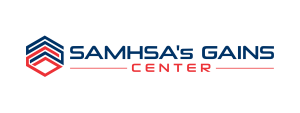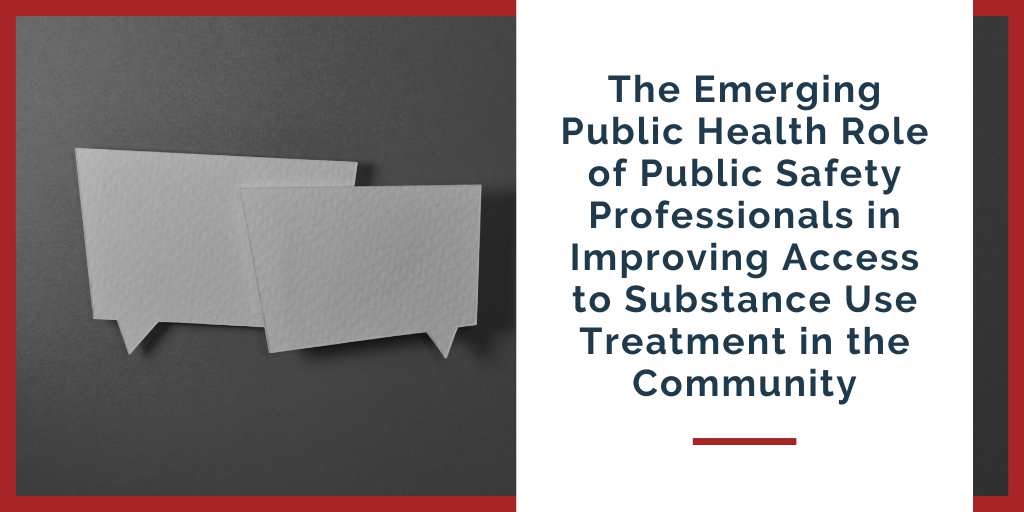
By Tim Coffey, Project Coordinator, 11th Judicial Circuit Criminal Mental Health Project (Miami, Florida)
Substance use disorders are overrepresented among criminal justice-involved populations. According to the Bureau of Justice Statistics, an estimated 58 percent of state prison inmates and 63 percent of sentenced jail inmates meet the criteria for drug dependence or use.[i] By contrast, the rate of drug use or dependence among the adult general population in the community is estimated to be around 5 percent.
Considering that in 2018 law enforcement nationwide made roughly 10.3 million arrests,[ii] this suggests a staggering number of individuals with substance use treatment needs entering the justice system on a daily basis.
Unfortunately, while the majority of individuals in jails and prisons meet criteria for a substance use disorder, relatively few receive treatment while incarcerated.[iii] Treatment that is provided in correctional settings is often insufficient to address or even initiate recovery from a substance use disorder, and is also rarely continued without disruption upon reentry to the community. This can result in a higher likelihood of relapse and recidivism, as well as tragic and costly consequences for individuals, families, and communities.
Many individuals with substance use disorders become entangled in the justice system not because they present a threat to public safety but because they lack adequate access to much-needed care and treatment in their communities. Not only is the arrest and detention of low-level, non-violent offenders with substance use disorders a wasteful and inefficient mechanism for addressing a public health need, but research has also demonstrated that even brief periods of incarceration are associated with destabilizing, negative outcomes such as disruptions in housing, health care, and critical social supports.[iv]
Some law enforcement agencies have grown frustrated witnessing the seemingly endless cycles of arrest and incarceration as well as a dramatic increase in law enforcement calls involving overdoses linked to the opioid epidemic and the resurgence of drugs such as methamphetamines and cocaine. This frustration has prompted a recognition that better outcomes may be achieved by applying public health approaches to reduce reliance on the criminal justice system. Typically, these approaches involve creating and strengthening partnerships between law enforcement and community stakeholders linked to social services and community-based treatment providers. Often, screening and assessment tools are used to identify individuals who present with low public safety risk and high substance use treatment needs. In addition, most programs work with local service providers to ensure rapid access to treatment services with ongoing case management and peer support.
One of the more recognized and replicated efforts to reduce unnecessary justice system involvement and improve access to community-based care for people with substance use disorders was implemented in Seattle in 2011. Known as Law Enforcement Assisted Diversion (LEAD), the program was created as a response to the failures of the “war on drugs,” which had resulted in racial disparities in the enforcement of laws and fractured relations between police and the community they served.[v] The intention was to reexamine the role police officers play in the community and to develop alternative responses, independent of the justice system, for individuals who were repeatedly coming into contact with law enforcement for low-level offenses such as drug possession and distribution.
Working collaboratively with stakeholders across the criminal justice, behavioral health, and social service systems, as well as with business and community leaders, law enforcement officers are encouraged to use discretionary authority to divert individuals into community-based treatment and support services in lieu of arrest and incarceration. In addition to linking participants to a wide range of treatment and support services, police and prosecutors work with case managers in the community to ensure any subsequent contact with the justice system is reflected in individual services plans.
Outcomes from the first 3 years of implementation in Seattle demonstrated that LEAD participants were 58 percent less likely to be arrested after enrollment in the program compared to individuals that went through “system as usual” criminal justice processing.[vi] The program also had the unanticipated but serendipitous impact of strengthening police-community relations, which had become strained after years of ineffective and often discriminatory criminal justice practices. Today, LEAD programs are operational in at least 38 communities across the country, with many more localities in the process of developing or launching additional programs.
In contrast to law enforcement-led diversion programs that rely solely on voluntary participation in treatment, the Miami Beach Police Department recently implemented a pilot program to leverage Florida’s civil commitment laws allowing for involuntary assessment, stabilization, and treatment of individuals experiencing severe substance use disorders.[vii] Known as the Marchman Act, the law allows the civil commitment for involuntary treatment of individuals who either are incapable of making rational decisions about their need for treatment or pose a risk of harm to self or others as a result of their substance use disorder. Operated within the Miami Beach Police Department’s Homeless Resource Unit, the program employs a combination of patrol officers, command staff, and peer support. Individuals served are those experiencing chronic homelessness with no known support systems, who are high utilizers of public safety resources, have histories of repeated arrests and examinations under the state’s civil commitment laws for substance use or mental health treatment, and are likely to experience serious physical harm or death if left untreated.
A key partner in this effort is Thriving Mind South Florida, a local nonprofit-managing entity that coordinates, funds, and oversees the prevention and treatment of mental health and substance use disorders in the community. Miami Beach Police work with Thriving Mind South Florida to identify candidates for the pilot program, transport them to detox, file petitions for involuntary treatment, attend court hearings, transport individuals to residential treatment, and provide assistance with accessing transitional and long-term housing in the community upon discharge from residential treatment. Typically, the period of court-ordered residential treatment lasts 90 days, after which most participants agree to voluntarily continue to receive services in the community on an outpatient basis. While enrolled in the program, participants receive assistance with care coordination, housing support, peer support services, assistance with accessing entitlement benefits and other means of economic self-sufficiency, and employment services.
Because the program involves the use of civil commitment, which is associated with a host of concerns about civil liberties and the proper role of government in compelling people to receive treatment, enrollment has been limited to a very narrowly defined group of individuals who are the most frequent recidivists in the justice and acute care systems and who have no willing family members or friends to intervene on their behalves. In the first year of implementation, a total of 7 participants were enrolled in the program. On average, each participant utilized more than $64,000 in services from the criminal justice and acute care treatment system during the year prior to enrollment. During the first year post-enrollment, participant costs were cut in half, averaging just over $32,000 per person. Furthermore, the majority of expenditures post-enrollment (68 percent) were accounted for by the cost of residential treatment and housing assistance, a more productive investment than jail, detox, and crisis units.
The emergence of community policing approaches that recognize the relationship between law enforcement agencies and the communities they serve has come to challenge traditional assumptions about the primary roles of law enforcement and crime prevention. The criminal justice system is not an effective solution for problems that are primarily driven by untreated healthcare needs and poverty, and incarceration is not a reasonable substitute for treatment or housing. As law enforcement officers are increasingly called upon to attend to community problems resulting from neglected public health and human services needs, it is encouraging to see them respond with police-community collaborations that reduce crime, build community relations, reduce drug use, and restore the lives of citizens.
References
[i] Jennifer Bronson, Jessica Stroop, Stephanie Zimmer, and Marcus Berzofsky, Drug Use, Dependence, and Abuse Among State Prisoners and Jail Inmates, 2007–2009, publication number NCJ 250546, prepared for the United States Department of Justice, Bureau of Justice Statistics (Washington, DC, 2017).
[ii] “Crime in the U.S. 2018,” Federal Bureau of Investigation, accessed January 6, 2020, https://ucr.fbi.gov/crime-in-the-u.s/2018/crime-in-the-u.s.-2018.
[iii] “Drug Facts: Criminal Justice,” National Institute on Drug Abuse, last modified June 2019, https://www.drugabuse.gov/publications/drugfacts/criminal-justice.
[iv] Christopher T. Lowencamp, Marie VanNostrand, and Alexander Holsinger, The Hidden Costs of Pre-trial Detention (Houston, TX: Laura and John Arnold Foundation, 2013).
[v] Untitled fact sheet (Seattle: LEAD National Support Bureau [no date]), accessed January 6, 2020, https://56ec6537-6189-4c37-a275-02c6ee23efe0.filesusr.com/ugd/6f124f_535679d78c2541fdaf433d3983cb2a31.pdf.
[vi] Ibid.
[vii] Kevin Lantigua and Carol Caraballo, “Team Up: Going to Bat for the Homeless” (PowerPoint presentation, no date), accessed January 6, 2020, http://www.citinternational.org/resources/Documents/TEAM%20UP%20-%20Going%20to%20bat%20for%20the%20homeless.pptx.
Like what you’ve read? Sign up to receive the monthly GAINS eNews!


